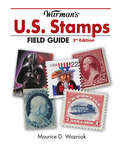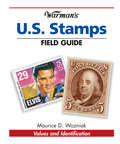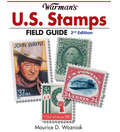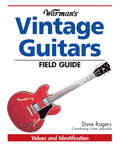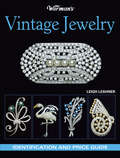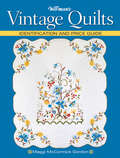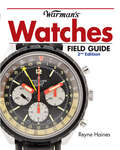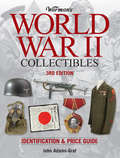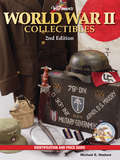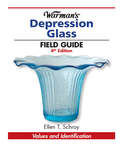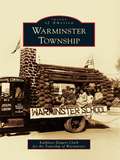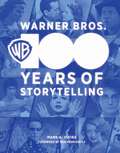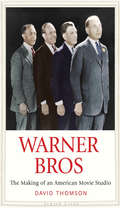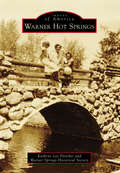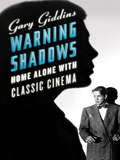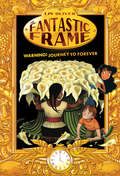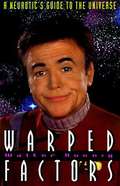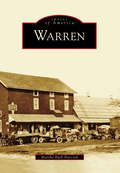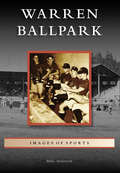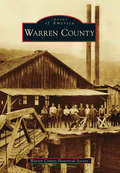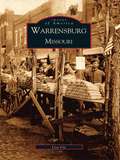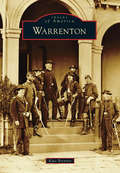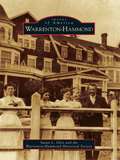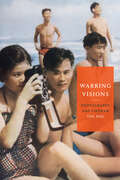- Table View
- List View
Warman's U.S. Stamps Field Guide
by Maurice D. WozniakWarman's U.S. Stamps Field Guide, 3rd edition, features photographs of nearly 1,000 color stamps, thousands of listings values for U.S. regular-issue and Airmail stamps from 1847-2013, all providing a compact and enjoyable overview of one of the world's oldest hobbies.
Warman's U.S. Stamps Field Guide: Values & Identification (Warman's Field Guide)
by Maurice WozniakThe take-it-with-you collecting resource! At last, a guide you can really carry along to estate sales, garage sales, and flea markets, containing 1,000 color photographs and current pricing to make on-the-spot appraisals easy. New to this edition! Feature chapters on Christmas stamps and Error stamps 1,000 detailed color photos Listings for all 4,250+ U.S. regular-issue and Airmail stamps from 1847-2010 Accurate prices in Unused and Used condition State-of-the-market report and advice on beginning a collection, including where to find stamps, judging quality, grading, and handling and storage About the Author Maurice D. Wozniak has been collecting stamps since the mid-1950s. After a 30-year career as a reporter and editor on metropolitan daily newspapers, Wozniak served for seven years as editor of the weekly Stamp Collector and The Stamp Wholesaler publications and Minkus catalogs for stamp collectors. He is currently president of the Wisconsin Federation of Stamp Clubs, an umbrella group of 30 clubs in the philatelic hobby, and a member of the American Philatelic Society and the Central Wisconsin Stamp Club. He is a freelance magazine writer on stamp collecting subjects.
Warman's U.S. Stamps Field Guide: Values and Identification
by Maurice WozniakThe take-it-with-you collecting resource! At last, a guide you can really carry along to estate sales, garage sales, and flea markets, containing 1,000 color photographs and current pricing to make on-the-spot appraisals easy. New to this edition! Feature chapters on Christmas stamps and Error stamps 1,000 detailed color photos Listings for all 4,250+ U.S. regular-issue and Airmail stamps from 1847-2010 Accurate prices in Unused and Used condition State-of-the-market report and advice on beginning a collection, including where to find stamps, judging quality, grading, and handling and storage About the Author Maurice D. Wozniak has been collecting stamps since the mid-1950s. After a 30-year career as a reporter and editor on metropolitan daily newspapers, Wozniak served for seven years as editor of the weekly Stamp Collector and The Stamp Wholesaler publications and Minkus catalogs for stamp collectors. He is currently president of the Wisconsin Federation of Stamp Clubs, an umbrella group of 30 clubs in the philatelic hobby, and a member of the American Philatelic Society and the Central Wisconsin Stamp Club. He is a freelance magazine writer on stamp collecting subjects.
Warman's Vintage Guitars Field Guide: Values and Identification (Warman's Field Guide)
by Dave RogersWith generations of talented and intense guitarists honored for their talents, it's no wonder the same models of guitars they use are hot tickets in today's collectibles market. Warman's Vintage Guitars Field Guide pulls together history, tips for collectors, lessons in guitar lingo, contact information and 350 photos of the leading guitars of the last 100 years in this unique and enjoyable guide.Collectors will gain greater appreciation of the craftsmanship and style that is synonymous with guitars in this full-color book that includes some of Eric Clapton's personal collection that fetched top dollar at auction. Particulars and current prices for guitars including Gibson, Fender, Stratocaster, Martin, Silverstone and Epiphone are covered in this unique resource.
Warman's Vintage Jewelry: Identification And Price Guide (Warman's)
by Leigh LesherTrinkets and treasures, that's the story of vintage jewelry. Today, jewelry is one of the most popular areas of collecting, and with millions of pieces on the market, there are plenty of possibilities for finding the piece that fits your interest and budget. Warman's Vintage Jewelry contains more than 800 color photos, descriptions and prices of stunning pieces of white metal and rhinestone jewelry. As a bonus, you will gain access to a history of rhinestones, including cuts and shapes.
Warman's Vintage Quilts: Identification And Price Guide (Warman's)
by Maggi Mccormick GordonImmerse yourself in the rich history, inspiring tales and fascinating colors and designs of vintage American quilts explained and explored in Warman's Vintage Quilts. The 350 fresh, evocative, never-before-seen colors photos of the 300+ vintage quilts, created between the 1880s and 1940, featured in this book encompass styles including chintz and reverse applique, elaborate trapunto, Irish chains, patriotic pictorials, Pennsylvania Minnonite quilts with calico backs, among others.
Warman's Watches Field Guide
by Reyne HainesWith 100% new content and more than 400 gorgeous color photos, Warman's Watches Field Guide is the essential portable guide to one of the hottest collecting categories. This book covers more than 100 years of watches from more than 50 watch manufactures, including famous Swiss (Patek Phillipe, Cyma, Rolex, Omega, Breitling) and American (Bulova, Illinoins, Eligin, Hamilton) companies. Each listing from these companies, and others, features a detailed description and accurate pricing information, along with photos of near-mint versus the average watch, all of which will be aiding you in identifying and valuing their own collections.
Warman's World War II Collectibles: Identification and Price Guide
by John Adams-GrafCollecting & Preserving WWII History Since the end of World War II, veterans, collectors, and history buffs have bought, sold, and traded the "spoils of war." Souvenir collecting began as soon as troops set foot on foreign soil. Soldiers looked for wartime trinkets and keepsakes to remind them of their time in the service, validate their presence during the making of history, and generate income when they returned home. Today these items help us understand and define a time when almost the entire world was at war. Newly expanded and completely updated, Warman's World War II Collectibles, 3rd edition, is a comprehensive full-color resource on World War II militaria. Illustrated with 1,800 all-new color images, the book is loaded with information and current values for uniforms, footwear, headgear, medals, firearms, bayonets, knives, personal items, accoutrements, and groupings--a new category--from the United States, Germany, England, Japan, the former Soviet Union, and other countries from 1939-1945. 1,800 all-new color images and thousands of values History and collector tips Pros and cons of each collecting area Availability and price ratings, as well as reproduction alerts First-person accounts of the war
Warman's World War II Collectibles: Identification and Price Guide
by Michael E. HaskewCollecting the Good War"This generation of Americans has a rendezvous with destiny."—Franklin Delano RooseveltHailed as "The Greatest Generation," the men and women who fought in World War II carried an unimaginable burden. Their date with destiny, both horrendous and heroic, shaped the world we know today.This newly expanded second edition of Warman's World War II Collectibles serves as a living tribute to these brave souls, as well as a guide to the remarkable and historical items that survived titanic battles. Brimming with expert collecting advice, detailed information and spectacular color images, this book is designed to provide perspective and guidance to the extraordinary world of World War II collectibles.This one-of-a-kind package features:1,100 full-color photos of collectibles from Allied and Axis forcesCoverage of uniforms, headgear, accouterments, medals, firearms, bayonets, knives, daggers, swords, and personal items3,000 listings with updated current-market pricesHelpful collecting advice, price and availability ratings, and reproduction alerts
Warman’s Depression Glass: Values and Identification (Warman's Field Guide)
by Ellen T. Schroy"Both informative and portable, "Depression Glass" is full of the vital information you need to assess your collection and make wise buying and selling decisions. This small package is perfect for taking with you to auctions, shows, estate sales, flea markets and anywhere your collecting takes you. It provides a full dose of: 95 Depression glass patternsThumbnail guide for instant pattern identificationTips for identifying reproductionsAuthoritative pricingCollector resourcesSo keep your copy of "Depression Glass" handy and use it often. You'll see just how easy it is to decide if you should buy or sell before someone else beats you to it. "
Warminster Township
by Kathleen Zingaro Clark Township Of WarminsterA township in its own right since 1711, Warminster has been at the forefront of American history for centuries. Rev. William Tennent's Log College, John Fitch's steamboat, and Johnsville's Naval Air Development Center all figure prominently into its historical record. From the beginning, Warminster's people tilled the land, educated their children, established businesses, and contributed to their community and the world at large. Today Warminster is a thriving commercial hub, and its legacy of growth and development continues.
Warner Bros.: 100 Years of Storytelling
by Mark A. VieiraIn this official centennial history of the greatest studio in Hollywood, unforgettable stars, untold stories, and rare images from the Warner Bros. vault bring a century of entertainment to vivid life.The history of Warner Bros. is not just the tale of a legendary film studio and its stars, but of classic Hollywood itself, as well as a portrait of America in the last century. It&’s a family story of Polish-Jewish immigrants—the brothers Warner—who took advantage of new opportunities in the burgeoning film industry at a time when four mavericks could invent ways of operating, of warding off government regulation, and of keeping audiences coming back for more during some of the nation's darkest days. Innovation was key to their early success. Four years after its founding, the studio revolutionized moviemaking by introducing sound in The Jazz Singer (1927). Stars and stories gave Warner Bros. its distinct identity as the studio where tough guys like Humphrey Bogart and strong women like Bette Davis kept people on the edge of their seats. Over the years, these acclaimed actors and countless others made magic on WB&’s soundstages and were responsible for such diverse classics as Casablanca, A Streetcar Named Desire, A Star Is Born, Bonnie & Clyde, Malcolm X, Caddyshack, Purple Rain, and hundreds more. It&’s the studio that put noir in film with The Maltese Falcon and other classics of the genre, where the iconic Looney Tunes were unleashed on animation, and the studio that took an unpopular stance at the start of World War II by producing anti-Nazi films. Counter-culture hits like A Clockwork Orange and The Exorcist carried the studio through the 1970s and '80s. Franchise phenomena like Harry Potter, the DC universe, and more continue to shape a cinematic vision and longevity that is unparalleled in the annals of film history. These stories and more are chronicled in this comprehensive and stunning volume. Copyright © 2023 Warner Bros. Entertainment Inc.
Warner Bros: The Making of an American Movie Studio
by David ThomsonBehind the scenes at the legendary Warner Brothers film studio, where four immigrant brothers transformed themselves into the moguls and masters of American fantasyWarner Bros charts the rise of an unpromising film studio from its shaky beginnings in the early twentieth century through its ascent to the pinnacle of Hollywood influence and popularity. The Warner Brothers—Harry, Albert, Sam, and Jack—arrived in America as unschooled Jewish immigrants, yet they founded a studio that became the smartest, toughest, and most radical in all of Hollywood. David Thomson provides fascinating and original interpretations of Warner Brothers pictures from the pioneering talkie The Jazz Singer through black-and-white musicals, gangster movies, and such dramatic romances as Casablanca, East of Eden, and Bonnie and Clyde. He recounts the storied exploits of the studio’s larger-than-life stars, among them Al Jolson, James Cagney, Bette Davis, Errol Flynn, Humphrey Bogart, James Dean, Doris Day, and Bugs Bunny. The Warner brothers’ cultural impact was so profound, Thomson writes, that their studio became “one of the enterprises that helped us see there might be an American dream out there.”
Warner Hot Springs (Images of America)
by Kathryn Lee Fletcher Warner Springs Historical SocietyAlso known as Kupa, Jojopin, and Aqua Caliente, Warner Hot Springs has been a "little piece of heaven" no matter what it has been called. Located in northeast San Diego County in the historic 47,000-acre Valle de San Jose, Warner Hot Springs is surrounded by the vast lands of the Cleveland National Forest, Los Coyotes Indian Reservation, Palomar Mountain, Bureau of Land Management, and Vista Irrigation Water District. Blessed with a four-season climate at an elevation of about 3,200 feet, it sits at the base of 6,500-foot Hot Springs Mountain, the tallest in San Diego County. Home of Native Americans, Spaniards, and white settlers, cowboys, and ranchers, Warner Hot Springs has played host to passing immigrants, Butterfield Stage passengers, vacationers, and movie stars. The world-famous hot springs have drawn people since the beginning of time. An early brochure states, "It's where you will have some of the best days of your life," and many would agree.
Warning Shadows: Home Alone with Classic Cinema
by Gary GiddinsA brilliantly insightful and witty examination of beloved and little-known films, directors, and stars by one of America's most esteemed critics. In his illuminating new work, Gary Giddins explores the evolution of film, from the first moving pictures and peepshows to the digital era of DVDs and online video-streaming. New technologies have changed our experience of cinema forever; we have peeled away from the crowded theater to be home alone with classic cinema. Recounting the technological developments that films have undergone, Warning Shadows travels through time and across genres to explore the impact of the industry's most famous classics and forgotten gems. Essays such as "Houdini Escapes! From the Vaults! Of the Past!," "Edward G. Robinson, See," and "Prestige and Pretension (Pride and Prejudice)" capture the wit and magic of classic cinema. Each chapter--ranging from the horror films of Hitchcock to the fantastical frames of Disney--provides readers with engaging analyses of influential films and the directors and actors who made them possible.
Warning! Journey to Forever #5 (The Fantastic Frame #5)
by Lin OliverFrom the bestselling coauthor of Hank Zipzer, fast-paced adventure meets art history in the final book of this thrilling series!The adventure reaches its climax as Tiger and Luna enter a famous painting by Diego Rivera. Only this time, they're not alone. The kids are accompanied by Viola, the owner of the fantastic frame and mother of the boy who went missing inside it over fifty years ago. As the trio traverses the world of The Flower Vendor (Girl with Lilies), can they end Viola's search once and for all?Praise for Danger! Tiger Crossing:"Ten-year-old Tiger Brooks and his neighbor, Luna Lopez, get up-close and personal with Henri Rousseau's 'Tiger in a Tropical Storm' in this action-driven first book in the Fantastic Frame series." -Publishers Weekly"Oliver keeps the plot itself snappy and peppy." -Kirkus
Warped Factors: A Neurotic's Guide to the Universe
by Walter Koenig"Beneath the tinsel of Hollywood," Oscar Levant once said, "is the real tinsel." Beneath that lies a cornucopia of absurd behavior and bizarre experiences that rival the most creative silver screen fiction. As a young transplant from New York in the 1950s and '60s Walter Koenig quickly came to know Hollywood as a place of energy and opportunity where life's uncertainties loomed large. Launching an acting career in this unpredictable cultural cauldron, he wound his way through various misadventures before finding he had attained a degree of success that surprised even him. This is Koenig's story--from growing up as the neurotic child of Russian immigrants in 1940s Manhattan through his rise to Star Trek fame as Pavel Chekov, Russian navigator of the U.S.S. Enterprise, and beyond. Not a typical Hollywood memoir, Warped Factors is anything but aloof. Koenig's very human narrative is full of the kind of insecurities and quirks anyone can relate to. With wry wit, striking candor, and a true gift for storytelling, Koenig takes us on a sometimes bumpy but often hilarious trip through his galaxy. Blind faith and a healthy sense of irony seem to sustain him as he relates a steady stream of anecdotes, including: *** * Pitching a story to an NBC producer who is in the midst of an out-of-body experience; * Having a loaded gun placed in his ear by a jealous manager; * Performing a controversial play that was interrupted by someone believed to be a member of the American Nazi party dressed in the uniform of a Chicken Delight delivery boy; * Getting fired from a CBS movie of the week for staring at the director; * Being mistaken for a bellhop during a public appearance in his Star Trek uniform; * Declining a Star Trek convention attendee's invitation to help sacrifice a chicken in her hotel room. Of course, this amusing memoir also takes us behind the scenes of Star Trek, with fresh perspectives not only on the cast members themselves but also on the development and evolution of the megalithic sci-fi legend. In fact, Koenig includes a number of the script ideas he himself pitched over the years, including a proposed outline for Star Trek VI (one that saw the deaths of several main crew members, including Kirk) and several for The Next Generation series. Also included are Koenig's notes to producer Harve Bennett on Star Trek IT. The Wrath of Khan, as well as his commentary on several other projects. Finally, Koenig offers candid reflections not only on the Star Trek years but on his life and career since. Most notable are his well-received stints on stage and his current role as the insidious Alfred Bester on television's Babylon S. Enjoying both critical and popular success, Koenig has once again confirmed his enduring position in science fiction's acting pantheon.
Warren
by Martha Ruth BurczykKnown as Beebe's Corners in the early 1800s, the city of Warren has grown tobecome the third-largest city in Michigan, surrounding Center Line--the citywithin the city. Warren's history has something for everyone. A pioneer burial groundwas discovered on school property in the 1970s, and an old Norway spruce still pointsthe way for a vanished tribe. In the 1920s, the Warren cooperative supplied goodsto a growing community, and the first African American cemetery in the state wasestablished as well. Warren's General Motors Tech Center was dubbed "the Versailles ofIndustry" in the mid-20th century; in addition to a worldwide radio broadcast, a crowdof 5,000 attended the dedication ceremony, including Pres. Dwight D. Eisenhower. TheChrysler tank arsenal helped to end World War II. World-renowned architects EeroSaarinen and Albert Kahn designed commercial and residential structures in Warrenand Center Line. Places of worship represent all faiths, and a top-notch school systemserves Warren--testaments to the culture of this community.
Warren Ballpark (Images of Sports)
by Mike AndersonIf there is a place where the ghosts of baseball players come at night to relive their glory days, it is Warren Ballpark in the old copper-mining town of Bisbee, Arizona. Warren Ballpark has been in use as a sports facility since 1909--longer than any other ballpark in the United States. Some of the most colorful and notable figures in baseball history have stepped onto its field as barnstorming big leaguers or as minor-league players hoping to make their way up to the "Big Show." Several players implicated in the infamous 1919 "Black Sox" scandal played in an "outlaw" league at Warren Ballpark during the 1920s. In 1917, it was the holding facility for 1,500 striking copper miners rounded up during the Bisbee Deportation. It is also the site of one of the longest-running and most bitterly contested high school football rivalries in America, between the Bisbee Pumas and the Douglas Bulldogs.
Warren County
by Monty Wanamaker Chris KeathleyThe fertile agricultural lands and majestic Cumberland Mountain wilderness that constitute Warren County belonged to the Cherokee Indians until the signing of the Third Treaty of Tellico on October 25, 1805, which officially opened up the region to pioneer settlers. Records show that a hunting party of white explorers made its way into the area from North Carolina and Virginia in 1769, and there is evidence that some families had settled in the territory as early as 1800. One of the earliest land grants is dated 1785 and was issued to Samson Collins in the vicinity of Rock Island. Warren County was officially established on November 26, 1807, by an act of the Tennessee General Assembly when the recently established county of White was divided. Within a decade, the population numbered almost 20,000. The authors present this book in celebration of Warren County's bicentennial in 2007, with its population currently numbering well over 40,000.
Warren County
by Warren County Historical SocietyWarren County's townships, nestled in the northwest corner of Pennsylvania, were originally formed from the land grants awarded by William Penn and his descendants to many individuals and families. Warren County was established March 12, 1800, and grew in prosperity from agriculture, lumber, oil, rafting, railroads, and tanning. The Allegheny National Forest and Allegheny River both provide magnificent arenas for many local recreational and business opportunities. In 1965, Warren County became home to the Kinzua Dam as the flooding of Corydon and parts of Kinzua Township created the reservoir. While most of the eastern and southern parts of the county are broken and hilly, the northeastern section is mostly glacial territory. Hearts Content in Watson Township is one of the few virgin timber tracts remaining in the Allegheny National Forest.
Warrensburg, Missouri
by Lisa IrleWarrensburg, Missouri, was destined to be more than a one-horse town. When Martin Warren set up his blacksmith shop in 1833, the farmers who gathered there to have their horses shod became the community's first citizens. The town was later named in honor of Warren. During the Civil War, Warrensburg hosted both Union and Confederate troops, who reportedly drilled on the same parade grounds. When the railroad reached Warrensburg on July 4, 1864, the frontier town began to thrive, eventually achieving success in agriculture and, since 1871, in higher education.Warrensburg, Missouri illustrates the history of the city in more than 200 vintage images, detailing the faces, places, and events that have colored the town. The "healing waters" of Pertle Springs drew visitors from all around, and in 1870, Warrensburg would be made famous by a trial concerning a slain hunting dog, Old Drum.
Warrenton (Images of America)
by Kate BrennerWhen Warrenton was founded in the 18th century, it was nothing more than a dusty road and watering hole. It served as a tavern and courthouse for weary travelers on the Falmouth-Winchester and Alexandria-Culpeper roads. As it grew and became the seat of Fauquier County, it was transformed into a magnet for judges and lawyers--many of whom shaped the country's government after the Revolutionary War. Almost a century later, Warrenton changed hands more than 60 times during the Civil War; it experienced Reconstruction and rose from the ashes after a great fire that wiped out almost half the town. Today, it has become an epicenter for equestrians, serving as home to foxhunters, the Virginia Gold Cup Steeplechase, and the Warrenton Horse Show. With vintage photographs, Warrenton beckons readers back in time, along the backdrop of beautiful 18th- and 19th-century architecture and estates, to remember the spirit of a bygone era that still paints the streets and colors the culture of the people who live there.
Warrenton-Hammond (Images of America)
by Warrenton-Hammond Historical Society Susan L. GlenLocated near the mouth of the Columbia River, Warrenton, incorporated in February 1899, is a city comprised of many earlier towns and villages. Hammond, although still having a separate post office and zip code, was merged with Warrenton in 1991. Fort Stevens, now an Oregon State Park, is located near Hammond. Lexington was the first county seat for Clatsop County until the county seat was vacated on December 4, 1879, and moved to Astoria. Skipanon, located near the same site as Lexington, was also annexed by Warrenton. Flavel, along the Columbia River between Warrenton and Hammond, was an active port for the Great Northern Steamship Company. It was annexed by Warrenton in 1918. Warrenton-Hammond documents each of these towns as they grew and became the present city of Warrenton.
Warring Visions: Photography and Vietnam
by Thy PhuIn Warring Visions, Thy Phu explores photography from dispersed communities throughout Vietnam and the Vietnamese diaspora, both during and after the Vietnam War, to complicate narratives of conflict and memory. While the visual history of the Vietnam War has been dominated by American documentaries and war photography, Phu turns to photographs circulated by the Vietnamese themselves, capturing a range of subjects, occasions, and perspectives. Phu's concept of warring visions refers to contrasts in the use of war photos in North Vietnam, which highlighted national liberation and aligned themselves with an international audience, and those in South Vietnam, which focused on family and everyday survival. Phu also uses warring visions to enlarge the category of war photography, a genre that usually consists of images illustrating the immediacy of combat and the spectacle of violence, pain, and wounded bodies. She pushes this genre beyond such definitions by analyzing pictures of family life, weddings, and other quotidian scenes of life during the war. Phu thus expands our understanding of how war is waged, experienced, and resolved.
